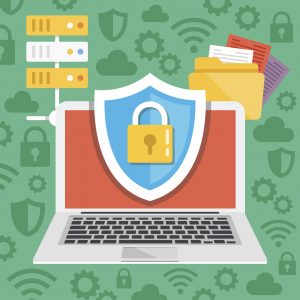Cyber Protection Solutions for SMBs
![]() As our businesses become even more reliant on technology and cloud services, the frequency and sophistication of cyber attacks continue to accelerate. Your Cyber Protection
As our businesses become even more reliant on technology and cloud services, the frequency and sophistication of cyber attacks continue to accelerate. Your Cyber Protection
Cyber Protection Needs
We need our businesses — and our people — to be aware, protected, and able to recover.
At Cumulus Global, our CPR model maps the necessary components of cyber security into three areas.
- Communicate & Educate
- Ensure you team understands the risk, educate them so they can avoid falling prey, create a culture of security and data privacy.
- Protect & Prevent
- Leverage advanced and “next gen” technologies to prevent attacks and to protect your networks, systems, data, and people from attacks.
- Recover & Respond
- No system is perfect; make sure you can recover your data and systems, return to normal operations, and respond to the technical, legal, and communication challenges.
Successful Cyber Protection relies on your policies and procedures, technologies, and people working in sync. Across more than a dozen focus areas, you need to balance the level or protection you need with the costs and with the risks of not doing enough. You need to balance external requirements, such as government and industry regulations, with internal priorities.
Your Cyber Protection Solution
To design and implement an affordable, integrated, and effective cyber protection solution for your business, start with a Cyber Protection Assessment (CPA). A CPA will assess your needs, within the context of your business, and preferred solutions across 15 areas of focus:
- Written Information Security Plan
- Patches and Updates
- Email Encryption
- Data Destruction
- Background Checks
- Written Information Response Plan
- Antivirus and Intrusion Detection
- Email and Web Security
- Account and Identity Management
- Employee Training
- Firewalls
- Backup / Continuity / Disaster Recovery
- File Encryption
- Network Access Security
- Responsible Parties
Using the results of the Cyber Protection Assessment, you can plan and implement your levels of protection in each area to create the balance that is best for your business.
Next Steps and Resources
Your best next step is to contact us and discuss your cyber protection status and needs with one of our Cloud Advisors. Consider using our Cyber Protection Assessment to understand your needs, current protections, gaps, and priorities.
Related Resources:
- 15 Best Practices for Cyber Protection
- This eBook provides additional information on each cyber protection factors, along with examples of “good”, “better”, and “best” options for each.
- Risk and Reward: Cyber Threats and Insurance
- Our January 2021 3T@3 Webcast discusses the need for robust cyber protection, the factors to consider, and the role of cyber insurance.




